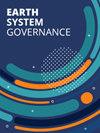Thresholds of significant harm at global level: The journey of the Earth Commission
IF 4.4
Q1 ENVIRONMENTAL STUDIES
引用次数: 0
Abstract
The planetary boundary framework proposes ‘safe’ boundaries, but these boundaries are not necessarily ‘just’. Hence, we ask: How has the Earth Commission defined just boundaries building on the concept of minimizing significant harm and how many people are currently exposed to harm above the safe and just threshold? We document the work of the Earth Commission to address these questions using our Earth System Justice framework. We conclude that: (a) from a justice perspective, nine criteria need to be considered when defining just boundaries; (b) the proportions of populations exposed to harm from exceeding safe and just boundaries today range from 11 to 84 % for the five domains studied (climate, biosphere, water, nutrients, aerosols); and (c) argue that the absolute upper limit for significant harm is possibly harm to 1 % of the population, which although not stringent enough to leave no one behind, would require radical transformations, given the populations currently already above the threshold.
全球层面重大危害的阈值:地球委员会的旅程
地球边界框架提出了“安全”边界,但这些边界不一定是“公正”的。因此,我们要问:地球委员会是如何根据最小化重大伤害的概念来界定公正的界限的?目前有多少人暴露在超过安全和公正阈值的伤害之下?我们记录了地球委员会的工作,利用我们的地球系统司法框架来解决这些问题。我们得出结论:(a)从正义的角度来看,在定义正义边界时需要考虑9个标准;(b)在所研究的五个领域(气候、生物圈、水、营养物、气溶胶)中,目前因超出安全和公正界限而受到危害的人口比例在11%至84%之间;(c)认为,重大危害的绝对上限可能是对1%的人口造成危害,尽管没有严格到不让任何人掉队,但考虑到目前已经超过阈值的人口,这将需要彻底的转变。
本文章由计算机程序翻译,如有差异,请以英文原文为准。
求助全文
约1分钟内获得全文
求助全文

 求助内容:
求助内容: 应助结果提醒方式:
应助结果提醒方式:


